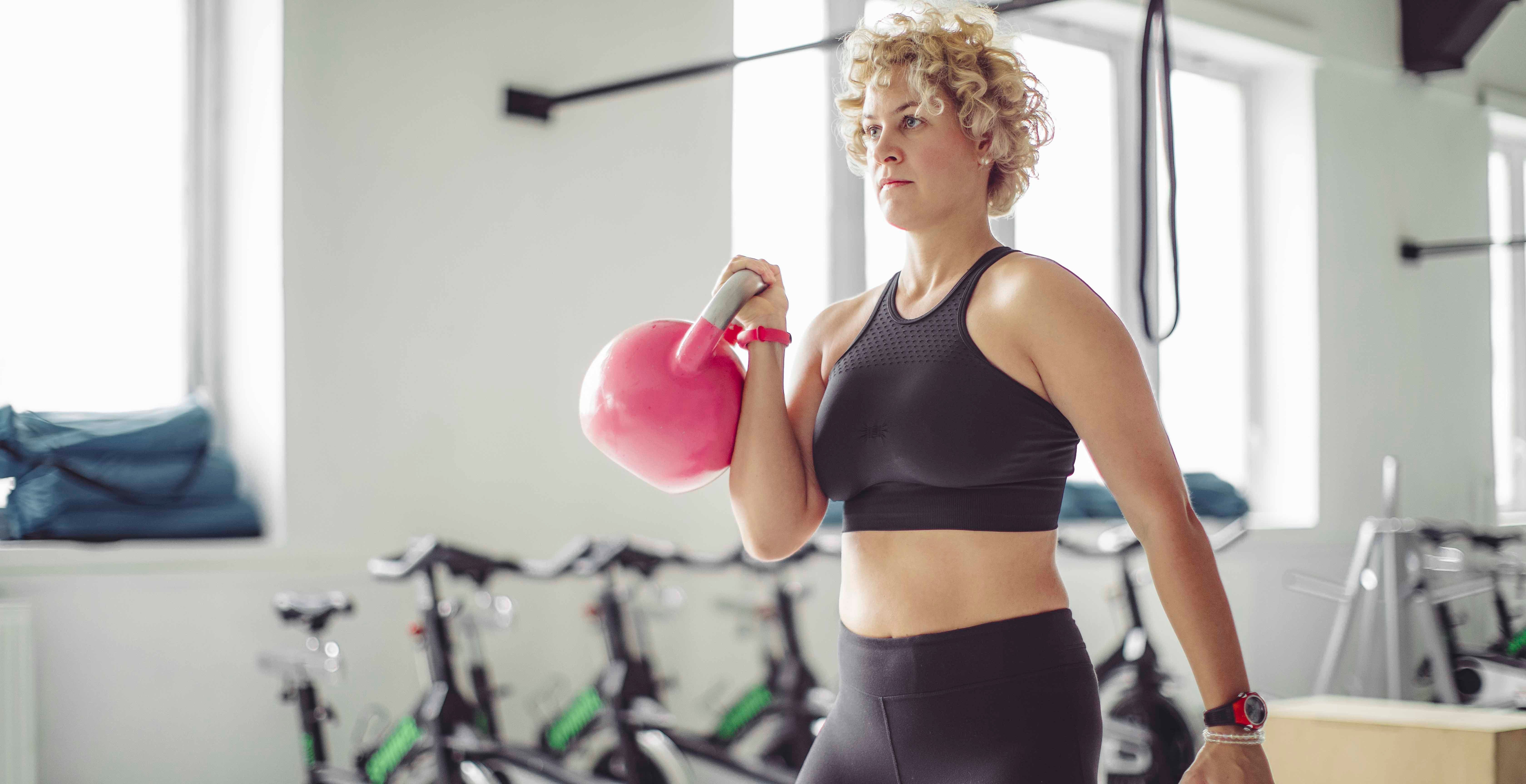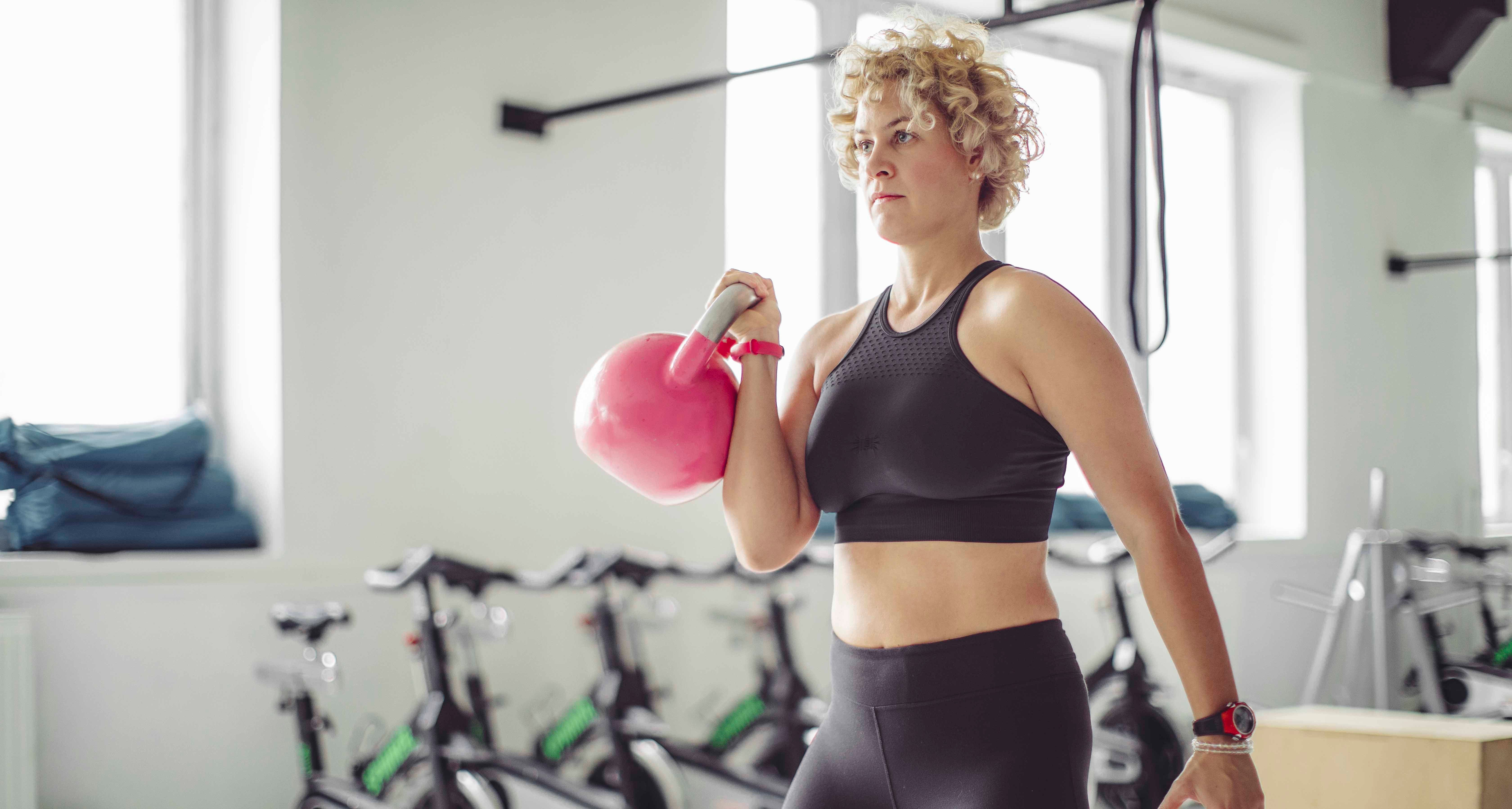4 Reasons to Add Weights to Your Workouts


Weightlifting is not just for body builders or gym fanatics – not at all. Adding weights to your workouts is a lot easier than you probably think and full of healthy benefits – here are four great reasons to give it a try, plus a beginner routine to get you started.
“Your fitness level is greatly enhanced by adding weightlifting [to your workouts], otherwise known as strength training,” says KaraLee Craig, a CanFitPro certified personal trainer and owner of GYMGUYZ - Greater Ottawa.
Get fitter and stronger
“Your body increases its muscle mass in response to strength training,” Craig explains. “Using dumbbells, resistance tubes, kettle bells, medicine balls or any external sources of resistance challenges muscles to become stronger and more lean [sic].”
Burn more calories
“As a result of weightlifting, our bodies increase muscle mass,” Craig says. And the greater the percentage of muscle within our bodies, the greater our metabolism, she explains. “… we are able to burn more calories for fuel when we pack on some muscle.”
Support your bones
Not only does weightlifting build and strengthen our muscles, it also strengthens our bones.
“Bones are living tissue, which means they are continuously breaking down, re-modelling and re-building. When you lift weights or engage in other resistance-training activities, your bones are stimulated to become more dense [sic] and therefore stronger,” Craig says.
“Strength training also provides the added benefit of strengthening the connective tissue that attaches muscle to bone,” she adds.
Age better
“Given that we lose approximately five to seven per cent of our muscle mass for every decade that we age,” says Craig, “strength training is an essential component of a comprehensive exercise program. It helps to preserve and better yet, to improve, strength, which correlates to maintaining a high level of function and independence as we age.”
So how do you get started with weightlifting? As with any new thing, it can feel a little daunting, but Craig has provided a simple routine that you can try next time you work out.
As for what weight to start with, Craig recommends choosing a weight that makes you feel fatigued (but doesn’t compromise your form) by the 10th-12th repetition of a set.
Eventually, after you’ve been doing a weightlifting routine for a while, you’ll want to increase the amount you’re lifting.
“Increase in small increments like three [to] five pounds once you are able to complete at least two sets without minimal fatigue,” Craig says. “For larger muscle groups like those found in the legs, you can increase in greater increments like five [to] eight pounds. If form is compromised for any increase in resistance, consider a smaller incremental increase or add an additional set with the previous weight.”
KaraLee Craig’s Beginner Routine
Start with a five- to eight-minute warm-up, Craig says. Walk or jog at a moderate pace or perform a combination of simulated jump rope, jumping jacks, and running in place.
Then perform two or three rounds of the circuit below:
Squat with medicine ball: 10-12 reps
“Stand with your feet beneath your hips. While holding [a] five- to eight-pound medicine ball at chest height, lower your body as if sitting in a chair. Keep your back straight and your chest out. Stop when your thighs are parallel to the floor. Don’t let your knees move past your toes. Push up from your heels to return to your original position.”
Shoulder Raise: 10-12 reps
“Stand up straight holding three- to five-pound dumbbells at your sides. With abdominal muscles contracted, raise arms out to the side. Don’t go past the level of your shoulders. Return to start position.”
Stationary Lunge Right/Left Leg: 10-12 reps
“Stand with your feet together while holding five- to eight-pound dumbbells. Contract your abdominal muscles in towards your spine. Lift one foot off the floor and step forward. Shift your body weight onto the lead foot, placing it firmly on the floor. As you step forward into the lunge, focus on a downward movement of your hips toward the floor. Avoid driving your hips forward. Continue lowering your body to a comfortable position or until your front thigh becomes parallel with the floor Keep the back straight. Firmly push off with the front leg to return to your upright, starting position. Complete reps on one leg, then perform on other leg.”
Plank 12-16 seconds
“Lie on your stomach with your elbows close to your sides and directly under your shoulders and palms down. Engage your abdominal muscles. Tuck your toes under and straighten your legs. Slowly lift your torso and thighs off the floor. Keep your torso and legs rigid. Do not allow any sagging in your ribcage or low[er] back. Continue to breathe, supporting your own body weight while keeping the abdominals contracted. To increase difficulty, while holding plank position, alternate leg lifts, lifting foot about four inches off the ground each rep for [a] total of 10-20 reps.”
